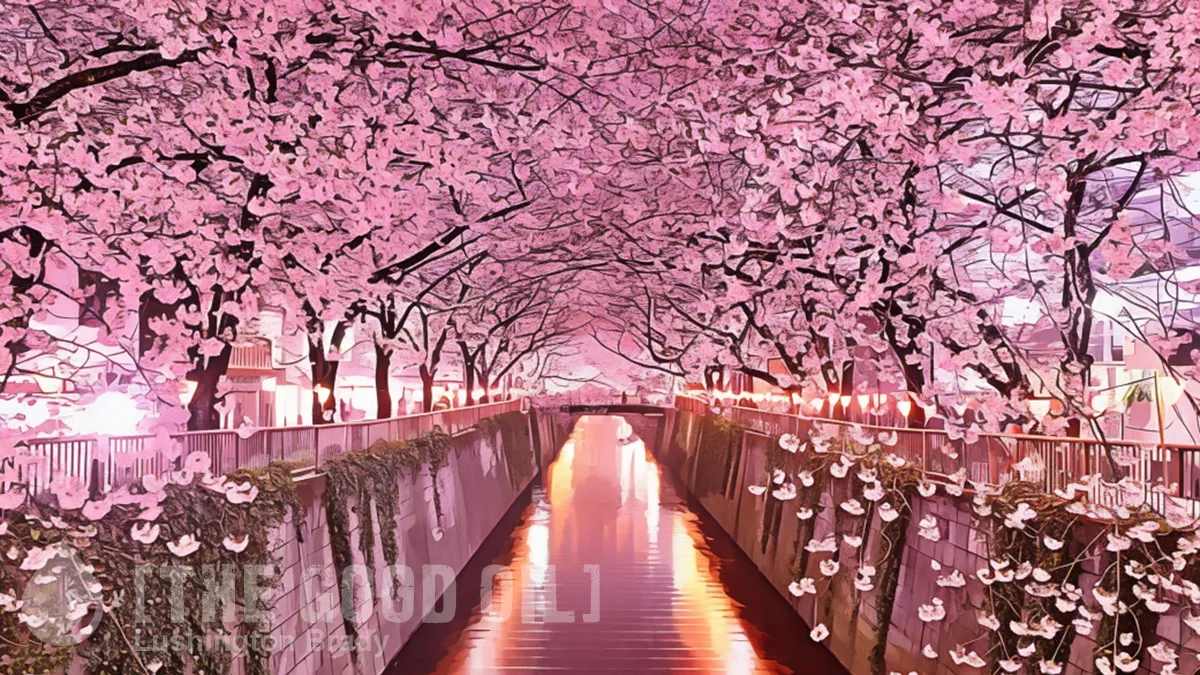As Western cities become filthier and ever more crime-ridden, Japan’s cities are a breath of fresh air. Clean, safe and scrupulously polite (it’s frowned on to eat in public while walking, and police will materialise and move you on if you so much as sit on the footpath).
But nothing speaks to Japan’s cultured decorousness than its signature pastime of the simple act of admiring cherry blossoms in spring.
Hanami comes from hana, ‘flower’, and miru, ‘to watch’. It most commonly refers to cherry blossom viewing and it’s a massively popular feature of the Japanese spring. So much so that it’s a major contributor to the Japanese economy.
This year’s cherry blossom season, which began in Tokyo on Monday, is expected to have an economic impact of around ¥1.39 trillion ($9 billion) on Japan – the highest in the country’s history.
The estimated impact is a 22.2 per cent increase from last year’s ¥1.14 trillion, according to an annual report compiled by economist Katsuhiro Miyamoto, a professor emeritus at Kansai University […]
To put things into perspective, the nationwide economic impact of this year’s hanami season would be 10 times that of baseball star Shohei Ohtani’s ¥132.8 billion economic impact from last season.
In part, that’s because Japan’s still-stagnant economy and the subsequently weak yen is a major attractant for foreign tourists. Last year, Japan experienced a record of nearly 37 million visitors. Hanami is, naturally, a big draw card for tourists as well as locals.
Miyamoto expects more than a quarter of hanami-goers to be foreign tourists, which would be the highest percentage of such visitors for the seasonal event in the nation’s history. Domestic interest in hanami this year is expected to be high as well, following the trend from last year.
In 2021, during the Covid-19 pandemic, the economic impact of hanami stood at ¥181.5 billion, with 97.5 per cent of the hanami-goers being locals.
The combined increase in both foreign and domestic hanami-goers this year would significantly drive up the money generated through activities such as purchasing food, drinks and souvenirs, as well as transportation costs.
If you want to see hanami this year, you’d better hurry. The cherry blossom season began five days earlier this year than last. Sakura (cherry blossom) trees are expected to be in full bloom in Tokyo this weekend and last until mid-April.
At its most basic, hanami is very simple: just enjoy looking at the trees covered in blossom, whether from a distance or up close.
Cherry blossoms are also especially beautiful in combination with a castle, temple or shrine. In some places the blossoms are lit up in the evening, which makes an amazing sight.
Hanami can be just a stroll in the park, but it traditionally also involves a picnic party under the blooming trees. Hanami parties have been held in Japan for many centuries, and today are held in public and private gardens and parks across the country. Famous cherry blossom spots can get very crowded, and the best picnic spots are fought after.
But, as with anything in Japan, there are myriad social rules of which visitors may be ignorant.
In some popular places it is a common practice to reserve a picnic spot long before the party is held. The typical practice is to spread one’s picnic sheet early in the morning and either mark it with the group’s name and party’s starting time or to have somebody positioned there during the whole day until the rest of the group arrives after work. But note that in many parks it is forbidden to leave sheets unattended.
Above all, don’t behave like barbarians: show some manners.
Treat the trees carefully. Do not pull on or shake branches. Do not pick blossoms. Don’t climb the trees. Don’t stand on the trees’ roots.
Take proper care of your garbage. Note that many parks do not have garbage bins. Be prepared to take your garbage home.
Check and respect local rules. They differ from park to park. Many parks do not allow barbecuing. Some have a curfew in the evenings. A few do not allow alcoholic beverages.
There’s a lot we could learn from the Japanese.







![[The Good Oil] Stuff Up of the Day](/content/images/size/w1304/format/webp/2024/09/Stuff-up-image-1.webp)

